Nau mai, haere mai ki Te Puia. Please check-in 15 minutes prior to your scheduled tour departure time.
Artists
|
Lenny Boonen
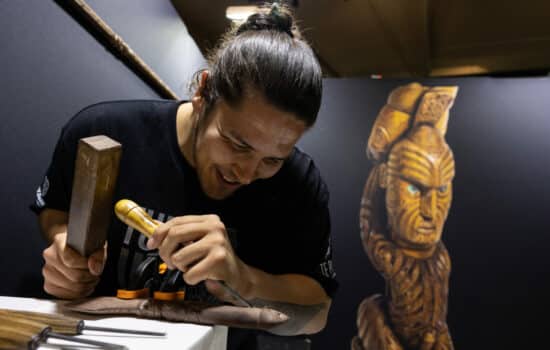
Lenny Boonen
Pouako (Tutor)- Ngāti Porou, Hauraki
Wānanga
Description Lenny’s passion for Toi Māori originated from his experiences through mau rakau. In hindsight, Lenny realized how fortunate he was to be a part of these wānanga. It was the first time Lenny had been exposed to traditional moko. Following these experiences, Lenny was reprimanded many times for drawing in class but continued regardless. By the chance, the Arts Captain for his school enrolled Lenny onto a carving course through Te Wānanga o Raukawa. This ignited the fire within Lenny to carve and he has never looked back since.
Te Wānanga Whakairo Rākau o Aotearoa
Description Lenny’s passion for Toi Māori originated from his experiences through mau rakau. In hindsight, Lenny realized how fortunate he was to be a part of these wānanga. It was the first time Lenny had been exposed to traditional moko. Following these experiences, Lenny was reprimanded many times for drawing in class but continued regardless. By the chance, the Arts Captain for his school enrolled Lenny onto a carving course through Te Wānanga o Raukawa. This ignited the fire within Lenny to carve and he has never looked back since.
Lenny’s passion for Toi Māori originated from his experiences through mau rakau. In hindsight, Lenny realized how fortunate he was to be a part of these wānanga. It was the first time Lenny had been exposed to traditional moko. Following these experiences, Lenny was reprimanded many times for drawing in class but continued regardless. By the chance, the Arts Captain for his school enrolled Lenny onto a carving course through Te Wānanga o Raukawa. This ignited the fire within Lenny to carve and he has never looked back since.
Their creations
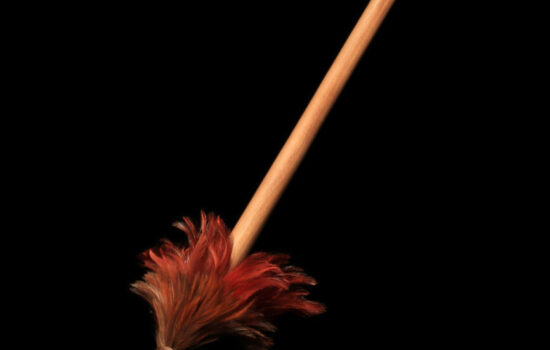
Sold
Taiaha
The taiaha is a long, slender hand weapon usually made from native hardwood – or in some instances whalebone – and is usually between 1.2 metres (3.9ft) and 2 metres (6.5ft) long. The point is carved to represent the human tongue (arero), above which is the forehead, eyes and upper lip, followed traditionally by a […]
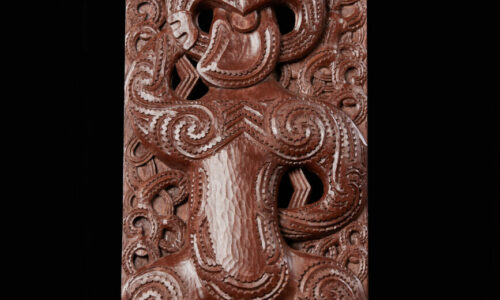
Sold
Poupou
The interior walls of the whare whakairo (carved meeting house) are adorned with carvings called poupou. Each poupou in a meeting house connects to a common ancestor, after whom the house was named. Spaced evenly along the inside walls, each poupou supported a rafter panel which extended from the main central ridge, reinforcing the importance […]
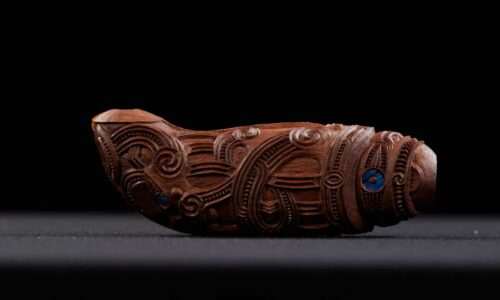
Nguru
Played as the occasion required, flutes were personal possessions, varying greatly in both design and decoration. There are several types, each producing distinct sound. The nguru were carved from one piece of wood, whalebone or even human bone and decorated with design. They are played by blowing air from the nose directly into the flute.
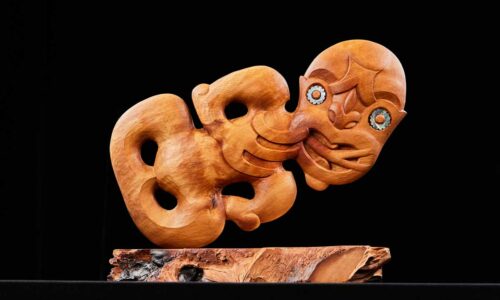
Tiki on stand
Tiki are symbols of fertility that depict a newborn child. They are often family heirlooms bearing personal names and embodying their wearers lineage.
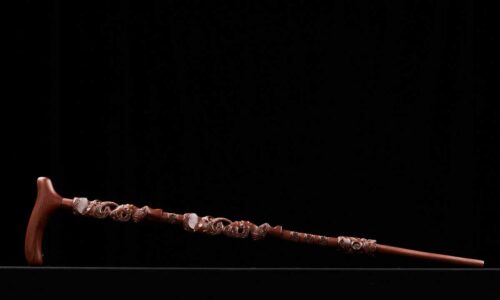
Tokotoko
Tokotoko are used when speaking on the marae – by esteemed orators – to indicate the direction of a speaker’s kōrero (speech). They often have the whakapapa (genealogy) of the orator carved into them and these can also be referenced by the orator during his address.
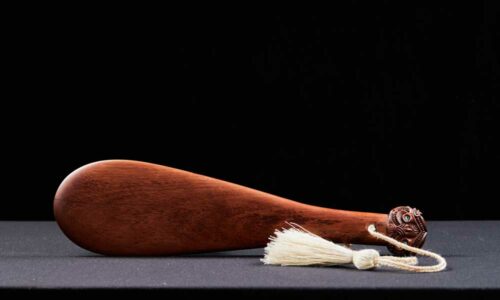
Sold
Patu
Patu (meaning to strike or hit) were typically fashioned from native hardwood, whalebone or stone, including our highly valued pounamu (greenstone). Patu were often sharp at their forward edge and were used with thrusting, jabbing and swinging blows. Māori weapons are notable for their fine sculptural form and were designed for close hand-to-hand combat. No […]